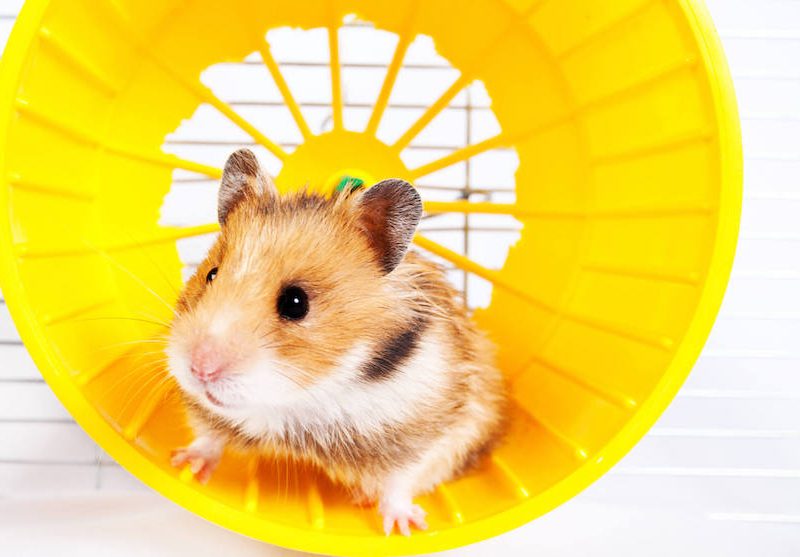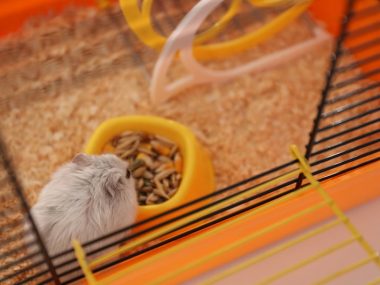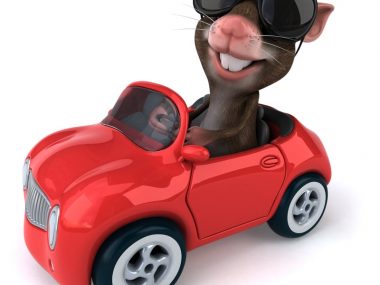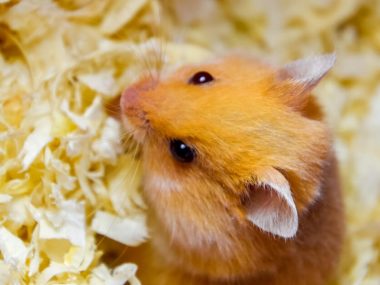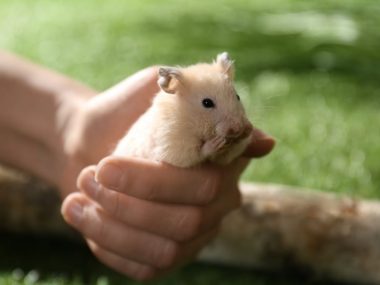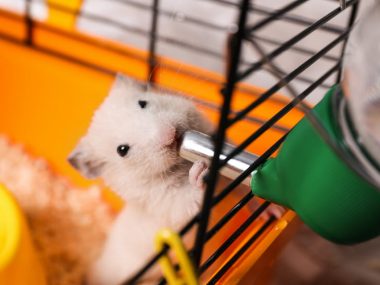For humans, the hamster wheel is symbolic of the daily grind that never ends. However, for our beloved pet hamsters, there’s a whole lot riding on the presence or lack of a wheel. If you are a hamster parent or entertaining adopting one, here’s everything you need to know about hamster wheel selection.
Table of Contents
So Why Do Hamsters Run On Wheels?
Hamsters may be small, but those little bodies are powerhouses full of energy. The amount of energy a hamster has overshadows that of most other animals. In the wild, hamsters are natural instinctive runners. All of this running is done in their natural habitat to search for food at night. These little guys literally run miles in search of food to bring back to their burrow.
Lending to the amount of energy hamsters have is their diet. Hamsters tend to eat things that are carbohydrate-dense which helps build energy. A published article (Nutrient Requirements of Laboratory Animals: Fourth Revised Edition, 1995) mentions how laboratory hamsters kept in conditions similar to a pet hamster eat every two hours. You can imagine the amount of stored up energy that is produced from eating this often. After indulging in eating, a hamster will be looking for ways to burn off excess energy.
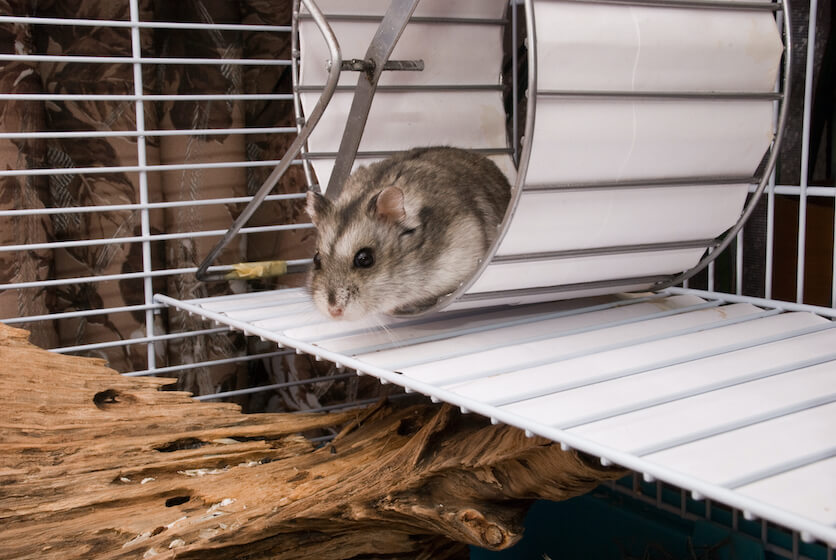
An intriguing study of measuring the expended energy produced by hamsters provides some insight into just how energetic they are. Nano Letters published an article (Converting Biomechanical Energy into Electricity by a Muscle-Movement-Driven Nanogenerator) to determine if hamsters produced enough energy running on a wheel to generate electricity. A Campbell Dwarf hamster was outfitted with a miniature jacket that it wore while running on a wheel.
It’s important to note that no wires or electrodes were inserted or attached to the hamster; the test was done in a humane manner. The little jacket (on the hamster) detected outward stretches of the hamster as it extended its legs to run. The signals from the jacket were sent to a computer. It was discovered that the amount of running a hamster does naturally can create enough power for a nanodevice.
The Bruce Museum Science Department had an intriguing article entitled “The Hamster Wheel of The Wild” that revealed the lure that a hamster wheel has within the wild. Hamster wheels were set up in the wild where any animal could access them. Cameras poised around the wheels caught various wild animals partaking in the fun of running on the wheel. Wild rodents deliberately returned to the wheel to run on them.
Dr. Theodore Garland, Jr. studies rodents and their relation to what drives them to use wheels. He discovered rodents (including hamsters) have a genetic basis attribution explaining why they are compelled to be highly energetic.
So, how do you know which type of hamster wheel is best?
How To Choose The Best Hamster Wheel
There’s no “one-size-fits-all” hamster wheel. You certainly would not want to buy a ginormous gizmo for your fluffy friend if it’s a dwarf hamster. Likewise, those bigger hamsters won’t do well with a wheel that’s too small for them. Hamster wheels are like a pair of shoes. The shoes must fit correctly and be made of quality materials to serve their purpose.
Things To Consider When Choosing A Hamster Exercise Wheel

Trying to find the perfect wheel for your little furry friend can be a bit daunting. There are various types out there on the market that are made of different materials, and all range at different prices!
To ensure your hamster gets the best in a wheel, we’ve given you a few things to consider when shopping around.
Size
A wheel should be size-specific for a hamster. If there is arching of the back while the hamster is on the wheel running, it’s too small. The hamster’s back should be horizontally straight when running. For those sweet little dwarf hamsters, bigger is not better. Likewise, larger hamsters need ample room. For example, the Syrian hamster wheel size should comfortably accommodate one without arching of the back.
Ideal wheel sizes for hamsters:
- For dwarf hamster species (Campbell’s, Roborovski, Djungarian) — 6-8 inches
- For larger hamster breeds (Syrian) — 8-12 inches minimum
Quality and Craftsmanship
If you have a chewer on your hands, it’s essential to pay close attention to the materials of a wheel. Those chewers can easily destroy wheels made of cheap plastic or even wood. Sometimes metal is best. Also, just because a wheel costs more does not mean it’s the best in quality.
Potential Noise
The last thing any hamster parent wants to hear in the middle of the night is the incessant squeaking of Fluffy enjoying their hamster wheel. The materials that go into making the different types of hamster wheels make the world of difference in noise. A silent hamster wheel is, of course, the best.
Types Of Hamster Wheels
Now we get into the “meat and potatoes” of hamster wheels. As we explore the different types, keep in mind what is best to meet your hamster’s unique needs.
Metal
Metal wheels have been around for a very long time and are the most commonly used.
Cost: $ – $$$
Pros And Cons
| Pros | Cons |
|
|
Plastic Hamster Wheel
Many hamster parents purchase plastic wheels because of the array of color options, designs, sizes, and affordability. While most plastic wheels are upright, some are known as “saucer” wheels that slant sideways with a completely open area to run in.
Cost $-$$
Pros And Cons
| Pros | Cons |
|
|
Wooden Hamster Wheel
Hamster parents who like a more organic, minimalistic look to the hamster cage often opt for wood wheels. The majority of these wheels have an open front and seem to be quiet when turning.
Cost $$
Pros And Cons
| Pros | Cons |
|
|
DIY Hamster Wheel
Many hamster parents with creative talents come up with some very innovative wheels. Those with woodworking skills create beautiful wooden wheels, while others come up with upright wheels simply made from popsicle sticks.
Cost $-$$
Pros And Cons
| Pros | Cons |
|
|
Do Hamsters Really Need A Wheel?
Yes, hamsters need a wheel. Rodents (mice, hamsters, rats, etc.) have an innate need to run. Whether a wheel is perceived as play, a form of entertainment, or a way to expend energy by these animals is yet to be understood. Running is a basic need that responsible hamster parents need to make sure is being met. Because of this theory, a wheel is a necessity for any caged rodent.
Can Hamsters Live Without A Wheel?
Domestic (pet) hamsters don’t have the benefit of running wild, so it’s essential (and humane) to provide them with outlets to expend energy. There’s nothing more detrimental to the health and well-being of a hamster than a cage void of toys and objects to exercise on and explore. Denying a hamster a form of passing the time, getting exercise, and having the mental stimulation of running is considered inhumane.
Hamsters “Wheely” Need That Wheel
As you can see, there are evidence-based studies indicating the instinctive need for hamsters to get those little legs moving. Evidence is hard to dispute. If anything can be taken from what we have presented to you here is that your hamster will undeniably be content and in shape with their very own wheel.
